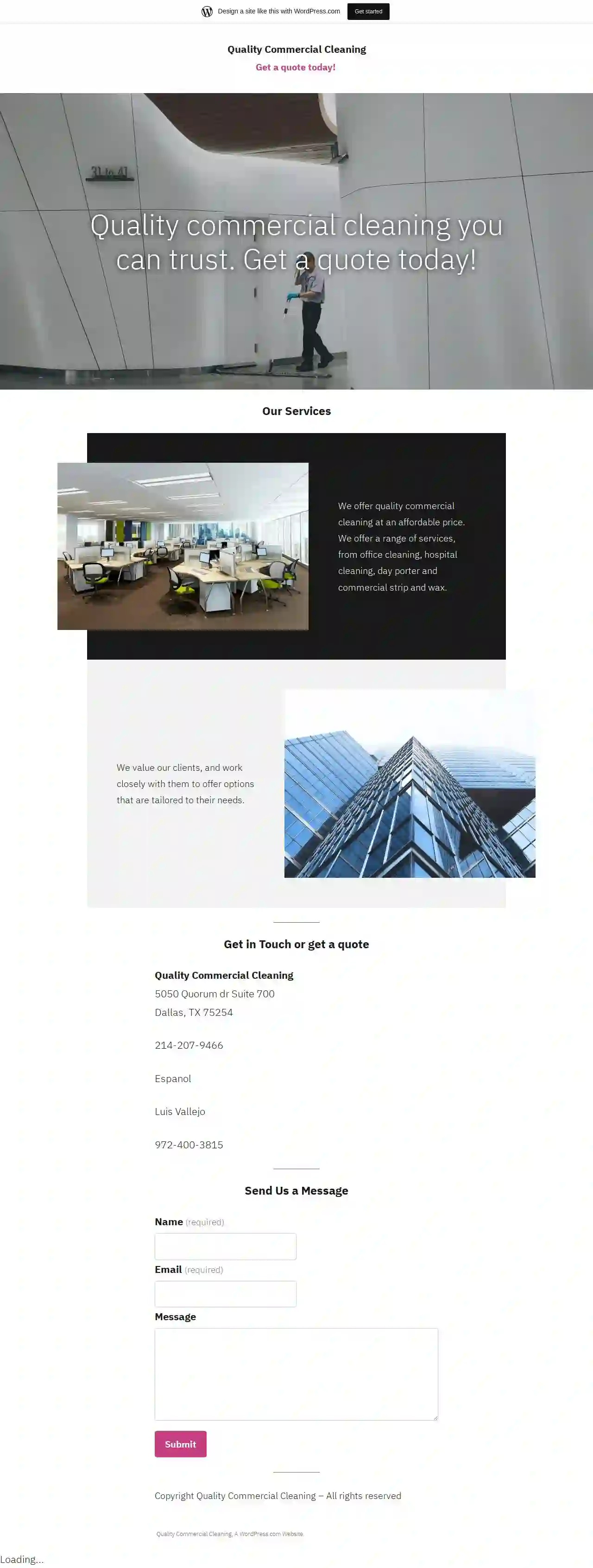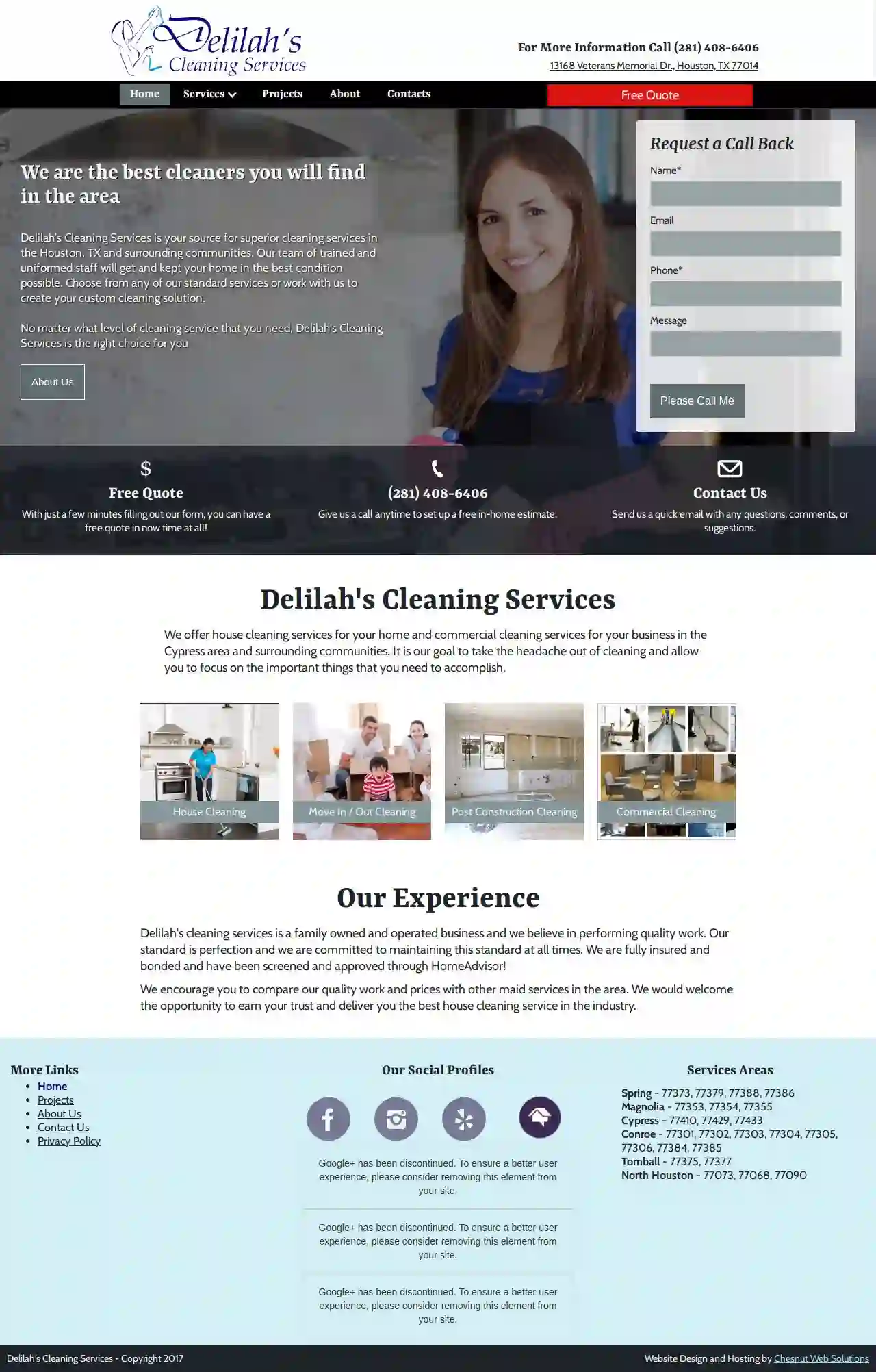Cleaning Services Leander
Find Local Cleaners in Leander
Get multiple Cleaning Companies quotes for your project today! Compare profiles, reviews, accreditations, portfolio, etc... and choose the best offer.

Bright & Smart Commercial Cleaning Houston
54 reviews1201 Fannin St Suite 262 #225, Houston, 77002, USBright & Smart Commercial Cleaning Houston is one of the most trustworthy and respected names in the state of Texas. With over 10 years of experience in Commercial Cleaning, we provide expertise, low costs, integrity, and value throughout your experience. Our trained staff is available 24 hours a day. We offer a wide range of services including Hardwood floor Cleaning, Concrete Staining, Pressure Washing Service, Janitorial Services, Construction debris removal service, Floor Cleaning Service, Post Construction Cleaning Service, House Cleaning Service Houston, Floor polishing, Floor waxing services, Carpet Cleaning service, and Concrete polishing service. Our team of cleaning professionals is dedicated to transforming your space into a gleaming haven. We take pride in our work, ensuring your satisfaction with our satisfaction guarantee.
- Services
- Why Us?
- Accreditations
- Testimonials
- Gallery
Get Quote
Maids on a Mission
4.9396 reviewsSan Antonio, US- Services
- Why Us?
- Gallery
Get Quote
Multitasking Cleaning Services LLC
59 reviews21750 Hardy Oak Blvd, San Antonio, TX, 78258, USMultitasking Cleaning Services is a dedicated team specializing in move-in, move-out, and Airbnb cleaning services, ensuring every corner of your new or old home is spotless. With over 1,000 cleans under their belt, they have consistently proven their reliability and commitment to quality. Their team's passion for providing top-notch cleaning services has driven their success since 2021. They offer a wide range of cleaning services for various facilities including offices, shops, medical facilities, factories, restaurants, airports, showrooms, movie theaters, daycares, gyms, and government facilities.
- Services
- Why Us?
- Testimonials
- Gallery
Get Quote
CIF Cleaning Services & Sales, LLC
552 reviewsNone, 2821 Oceanside Blvd. Suite I, Oceanside, 92054, USCIF Cleaning Services & Sales, LLC is a veteran-owned and operated business that specializes in cleaning and sales of military gear. With three locations in Oceanside, CA, Jacksonville, NC, and Killeen, TX, we offer convenient and hassle-free CIF/IIF/TA-50 gear cleaning services guaranteed to pass inspection. Our team is made up of veterans and former CIF employees who understand the importance of getting the job done right the first time. We offer a range of services, including CIF/IIF/TA-50 gear cleaning, gear sales, and former CIF employee expert advice. We also buy used CIF/IIF/TA-50 gear and have a large inventory of used gear for sale at competitive prices. Our goal is to provide a much-needed service at a fair price, and we measure our success by the number of satisfied customers we serve.
- Services
- Why Us?
- Accreditations
- Our Team
- Testimonials
- Gallery
Get Quote
Quality Commercial Cleaning
52 reviewsDallas, US- Services
- Why Us?
- Gallery
Get Quote
Oglide Cleaning Service
56 reviewsSan Antonio, US- Services
- Why Us?
- Gallery
Get Quote
Delilah's Cleaning Services
4.950 reviewsHouston, US- Services
- Why Us?
- Gallery
Get Quote
Master Clean Services
55 reviewsSan Antonio, US- Services
- Why Us?
- Gallery
Get Quote
Prestige Janitorial Services- Houston
511 reviewsHouston, US- Services
- Why Us?
- Gallery
Get Quote
Mark's Move In & Out Cleaning LLC
547 reviewsKilleen, US- Services
- Why Us?
- Gallery
Get Quote
Over 60,241+ Cleaning Companies on our directory
Our cleaning contractors operate in Leander & beyond!
CleaningMatch has curated and vetted Top Cleaning Companies arround Leander. Find the most reliable pro today.
Frequently Asked Questions About Cleaning Services
- Weekly: Suitable for busy households with children or pets, ensuring a consistently clean and healthy environment.
- Bi-weekly: A good option for smaller households or those who maintain a relatively clean home.
- Monthly: May be sufficient for individuals or couples who live a minimalist lifestyle.
- Quarterly or Annually: Can be suitable for deep cleaning or seasonal cleaning tasks.
- Residential Cleaning: Covers cleaning homes, apartments, and other living spaces.
- Commercial Cleaning: Focuses on cleaning offices, retail stores, and other business establishments.
- Deep Cleaning: A thorough and intensive cleaning that covers areas often neglected during regular cleaning.
- Move-In/Move-Out Cleaning: Comprehensive cleaning performed before or after moving into or out of a property.
- Post-Construction Cleaning: Specialized cleaning after construction or renovation projects to remove debris and dust.
- Specialized Cleaning: Includes services like carpet cleaning, window cleaning, upholstery cleaning, and more.
- Regular Sweeping or Dust Mopping: Sweep or dust mop hardwood floors daily to remove dust, dirt, and debris.
- Vacuuming: Vacuum hardwood floors weekly using a vacuum cleaner with a hardwood floor attachment to avoid scratches.
- Damp Mopping: Damp mop hardwood floors with a hardwood floor cleaner as needed. Avoid excessive water, as it can damage the wood.
- Prevent Scratches: Place felt pads under furniture legs to prevent scratches. Avoid dragging heavy objects across the floor.
- Avoid Harsh Cleaners: Do not use harsh chemicals, abrasive cleaners, or furniture polish on hardwood floors.
- Professional Cleaning: Consider hiring a professional hardwood floor cleaning service for deep cleaning and refinishing as needed.
- Declutter Regularly: Set aside time regularly to declutter your belongings. Donate, sell, or discard items you no longer use or need.
- Designated Storage: Assign specific storage spaces for different items, such as shelves for books, drawers for clothes, and containers for toys.
- Labeling: Label storage containers and drawers to make it easy to find items and put them back in their designated places.
- 'One In, One Out' Rule: For every new item you bring into your home, get rid of an old one. This prevents clutter from accumulating.
- Vertical Storage: Utilize vertical storage solutions, such as shelves, wall organizers, and hanging racks, to maximize space.
- Digital Organization: Organize digital files and emails to reduce paper clutter. Use cloud storage services to free up space on your computer.
How often should I have my house cleaned?
You can adjust the frequency based on your needs and budget. Some people opt for weekly cleaning for high-traffic areas like kitchens and bathrooms and bi-weekly cleaning for the rest of the house.
What are the different types of cleaning services?
The best type of cleaning service depends on your specific needs, the size and condition of the property, and your budget.
What are some tips for cleaning hardwood floors?
By following these tips, you can keep your hardwood floors looking beautiful for years to come.
What are some tips for keeping my home organized and clutter-free?
By adopting these strategies, you can create a more organized and clutter-free home, promoting a sense of calm and efficiency.
How often should I have my house cleaned?
- Weekly: Suitable for busy households with children or pets, ensuring a consistently clean and healthy environment.
- Bi-weekly: A good option for smaller households or those who maintain a relatively clean home.
- Monthly: May be sufficient for individuals or couples who live a minimalist lifestyle.
- Quarterly or Annually: Can be suitable for deep cleaning or seasonal cleaning tasks.
You can adjust the frequency based on your needs and budget. Some people opt for weekly cleaning for high-traffic areas like kitchens and bathrooms and bi-weekly cleaning for the rest of the house.
What are the different types of cleaning services?
- Residential Cleaning: Covers cleaning homes, apartments, and other living spaces.
- Commercial Cleaning: Focuses on cleaning offices, retail stores, and other business establishments.
- Deep Cleaning: A thorough and intensive cleaning that covers areas often neglected during regular cleaning.
- Move-In/Move-Out Cleaning: Comprehensive cleaning performed before or after moving into or out of a property.
- Post-Construction Cleaning: Specialized cleaning after construction or renovation projects to remove debris and dust.
- Specialized Cleaning: Includes services like carpet cleaning, window cleaning, upholstery cleaning, and more.
The best type of cleaning service depends on your specific needs, the size and condition of the property, and your budget.
What are some tips for cleaning hardwood floors?
- Regular Sweeping or Dust Mopping: Sweep or dust mop hardwood floors daily to remove dust, dirt, and debris.
- Vacuuming: Vacuum hardwood floors weekly using a vacuum cleaner with a hardwood floor attachment to avoid scratches.
- Damp Mopping: Damp mop hardwood floors with a hardwood floor cleaner as needed. Avoid excessive water, as it can damage the wood.
- Prevent Scratches: Place felt pads under furniture legs to prevent scratches. Avoid dragging heavy objects across the floor.
- Avoid Harsh Cleaners: Do not use harsh chemicals, abrasive cleaners, or furniture polish on hardwood floors.
- Professional Cleaning: Consider hiring a professional hardwood floor cleaning service for deep cleaning and refinishing as needed.
By following these tips, you can keep your hardwood floors looking beautiful for years to come.
What are some tips for keeping my home organized and clutter-free?
- Declutter Regularly: Set aside time regularly to declutter your belongings. Donate, sell, or discard items you no longer use or need.
- Designated Storage: Assign specific storage spaces for different items, such as shelves for books, drawers for clothes, and containers for toys.
- Labeling: Label storage containers and drawers to make it easy to find items and put them back in their designated places.
- 'One In, One Out' Rule: For every new item you bring into your home, get rid of an old one. This prevents clutter from accumulating.
- Vertical Storage: Utilize vertical storage solutions, such as shelves, wall organizers, and hanging racks, to maximize space.
- Digital Organization: Organize digital files and emails to reduce paper clutter. Use cloud storage services to free up space on your computer.
By adopting these strategies, you can create a more organized and clutter-free home, promoting a sense of calm and efficiency.